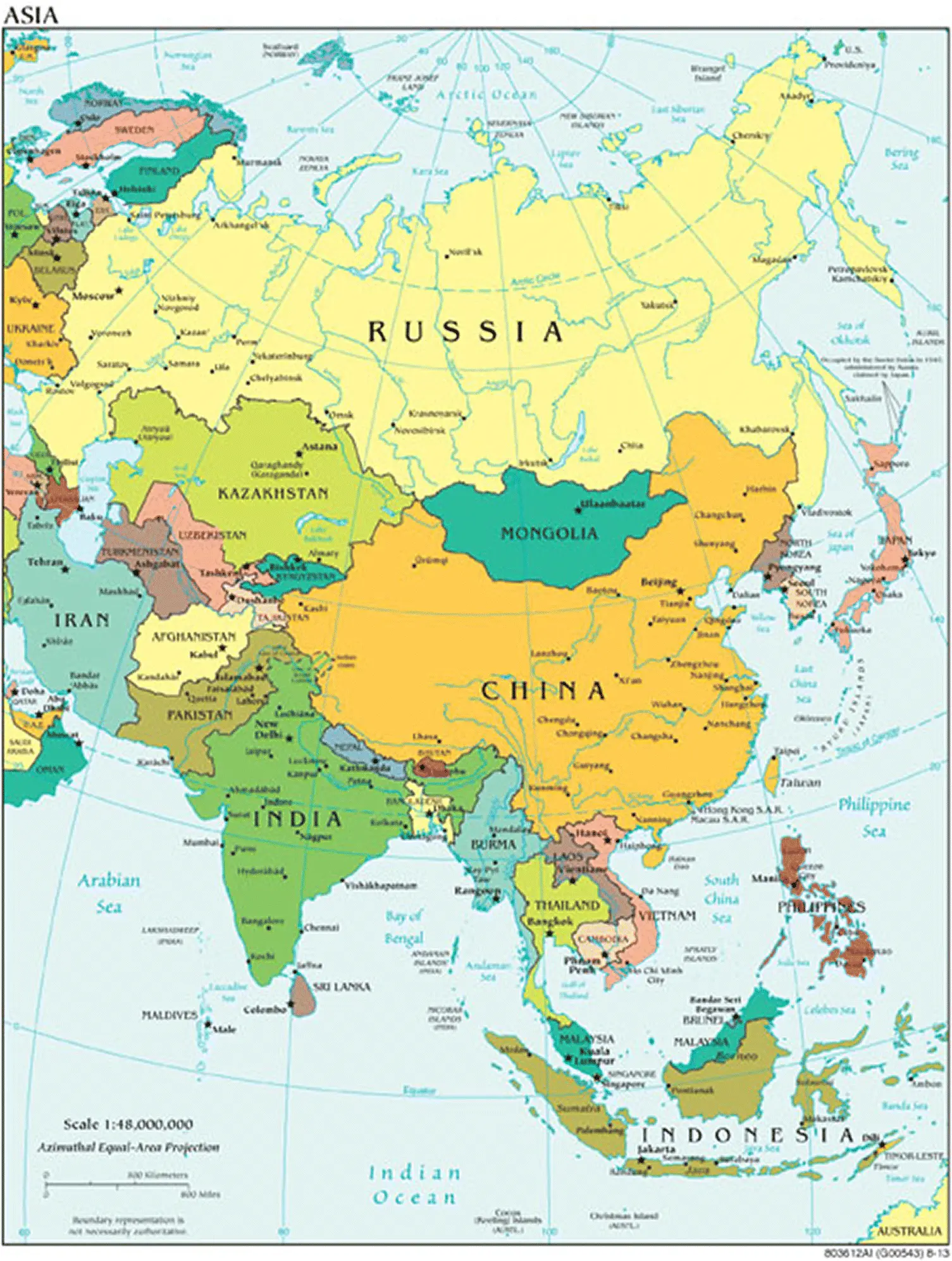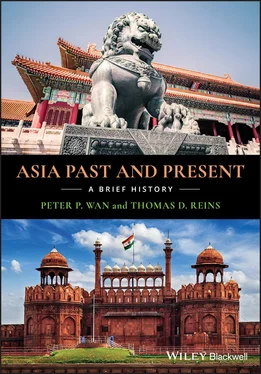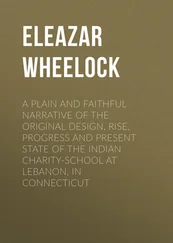…social development is the bundle of technological, subsistence, organizational, and cultural accomplishments through which people feed, clothe, house, and reproduce themselves, explain the world around them, resolve disputes within their communities, extend their power at the expense of other communities, and defend themselves against others’ attempts to extend power. 1
This book will explore Asia chiefly from historical, social, and economic angles. Historically it will attempt to put into context the long course of events generated by numerous social and economic entities, ranging organizationally from tribes to nation‐states and chronologically from Paleolithic times to the early twenty‐first century. This will involve a good deal of political history, the container within which domestic and international activities can most easily be examined. Because there is no physically discrete Asia but instead a Eurasian landmass, and since “the division between Europe and Asia is entirely arbitrary,” we will focus on terrain, including India, Afghanistan, and Central Asia eastward and Japan and New Guinea westward. The northern frontier will include Mongolia and the Russian Far East and extend southward to Indonesia. These territorial frontiers contain the civilizations that have most influenced what most scholars consider to be Asia. 2 Clearly the expansion of Islam and Western nations into Asia also greatly contributed to Asia’s development, but India’s and China’s thought and institutions still constitute the cultural foundations, albeit reinforced by non‐Asian sources, upon which contemporary Asian nations build their societies.

Asia in the early twenty‐first century.
Source: From https://www.cia.gov/library/publications/the‐world‐factbook/graphics/ref_maps/political/jpg/asia.jpg. Central Intelligence Agency. Public Domain.
The word culture suggests several possible subjects. It can refer to microorganisms in a Petri dish, to people with good “taste” who enjoy haute cuisine and classical music, to the literate elite (high culture) as opposed to the “great unwashed” (i.e., the masses), or to modern nations compared to the developing world. In this study of Asia through the centuries, culture indicates human culture, which includes the innumerable ideas and practices the people of the continent have created over the millennia to meet their needs, both real and apparent. Thus culture encompasses—but is not limited to—such things as religious rituals, political institutions, economic arrangements, marriage customs, artistic creations, linguistic conventions, eating habits, and so forth.
Cultures evolve, interact with other cultures or remain isolated, expand or disappear. Since culture includes all behavior, different societies emerged, reflecting diverse approaches to social relationships in communities of shared values. Societies have ranged in size from small bands of several dozen to tribes, clans, or lineages of several hundreds or thousands; to villages of quite a few hundred to many thousands; to cities of more than a few thousand to several million; to regions of tens of millions; to nations of scores to hundreds of millions; or to entities such as “the West,” “Confucian Civilization,” “the Islamic World,” and “Hindustan,” each with at least hundreds of millions of inhabitants. Of course, differences will exist even among members of any culture, but one culture’s common beliefs, behaviors, and organizational techniques typically distinguish it as a separate society and set it off from others.
Societies have also reflected, as they do at present, a range of geographical and climatological settings. Thus, landlocked communities of the past did not likely engage in seafaring activities, while today’s natural‐resource‐poor nations need to rely on other assets in order to survive or prosper. Consequently, peoples across Asia (and around the world) created somewhat varied or even radically heterodox measures to cope with different physical circumstances. The practices of some cultures produced successful material results, such as peace and prosperity, while the ways of life in other cultures brought about psychological and spiritual comfort, while at the same time still other cultures achieved both material and emotional success, even as others failed in both material and psychological respects.
Timeline: Cultures and the Development of Core Asian Civilizations
| 4.5 billion years ago |
Earth formed |
| 64 million years ago |
Dinosaurs become extinct |
| 2.5 million–10,000 BCE |
Paleolithic or Old Stone Age; hominid and human hunting and gathering develop |
| 200,000 BCE |
Human beings emerge in Africa |
| 50,000 years ago |
Humans arrive in South Asia |
| 10,000 BCE |
Neolithic or New Stone Age; agriculture begins |
| 4000 BCE |
Civilization begins in Mesopotamia and Egypt |
| 3300 BCE |
Indus Valley civilization begins |
| 3000–2000 BCE |
Bronze Age begins in various Eurasian locations |
| 2000 BCE |
Civilization begins in the North China Plain |
| 1000 BCE |
Iron Age commences in various Eurasian locations |
| Third century BCE |
Chinese cultural and political influence evident in Vietnam |
| First century BCE |
Indian cultural influence evident in most of Southeast Asia and much of Central Asia |
Social scientists have classified human social development into four broad groupings, or ways of life, based on the principal means by which people organized and exploited their surroundings: Paleolithic, Neolithic, Pastoral Nomadic, and Civilized, the last of which can be divided into numerous categories and subcategories. As these ways of life are not mutually exclusive, some or all of them have been practiced at the same time in Asia (and around the globe). However, such drastically different customs typically produced conflict among diverse lifestyles when in close proximity. Thus, as farmers occupied gatherers’ former hunting grounds after approximately 10,000 BCE, Neolithic and Paleolithic communities clashed; later, Neolithic farmers resisted but gradually came under the domination of Civilized urban elites beginning around 4000 BCE in Mesopotamia and Egypt, by roughly 3000 BCE in India, and just after 2000 BCE in China. And traditional civilizations based on agricultural productivity began colliding with civilizations based on industrial output after roughly 1800 CE. Although hunting communities, farming societies beyond the reach of civilization, and traditional agricultural civilizations declined in numbers, wealth, and/or power, they typically remained as vestigial ways of life transitioning to oblivion or “modernization.” But the Paleolithic and Neolithic periods account for the majority of time that human beings have existed; Pastoral Nomadic and Civilized ways represent relatively new human arrangements.
Paleolithic or Old Stone Age culture employed two principal instruments that the earliest humans used to survive: crude stone tools and weapons, as well as hunting and food gathering. Paleolithic people foraged for wild plants that provided not only nutrition but also materials for clothing, tools, weapons, and artistic activities. Pottery shards have been unearthed throughout Asia, and in 2009 Chinese and Israeli archaeologists unearthed pieces of earthenware in southern China that were estimated to be 18,000 years old. At that point humans had begun the process of devising the ways and means of improving their standard of living. They learned by trial and error which products of the earth were edible or poisonous, possessed medical or manufacturing uses, or had recreational, religious, or other applications.
Читать дальше













